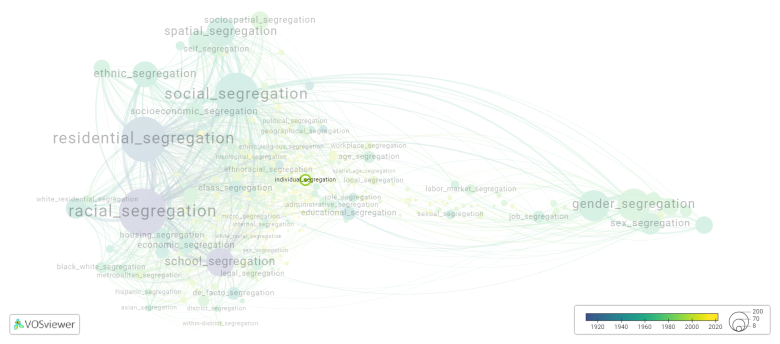Individual segregation: Difference between revisions
(Creating page) |
(Creating page) |
||
| Line 6: | Line 6: | ||
Individual segregation refers to the separation of individuals based on certain characteristics, such as race, ethnicity, gender, or socioeconomic status. This can manifest in various ways, such as discriminatory practices in housing, education, employment, or social settings. Individual segregation can lead to inequalities in access to resources and opportunities, as well as perpetuate stereotypes and biases. Efforts to address individual segregation often involve policies and initiatives aimed at promoting diversity and inclusivity. | Individual segregation refers to the separation of individuals based on certain characteristics, such as race, ethnicity, gender, or socioeconomic status. This can manifest in various ways, such as discriminatory practices in housing, education, employment, or social settings. Individual segregation can lead to inequalities in access to resources and opportunities, as well as perpetuate stereotypes and biases. Efforts to address individual segregation often involve policies and initiatives aimed at promoting diversity and inclusivity. | ||
==See also== | ==See also== | ||
==Related segregation forms== | |||
Individual segregation is frequently discussed in the literature with the following segregation forms: | |||
[[social segregation]], [[global segregation]] | |||
[[File:individual_segregation.png|780x780px]] | |||
For the complete network of associated segregation forms, see: | |||
year of publication https://tinyurl.com/2235lkhw | |||
Louvain clusters https://tinyurl.com/2d8wg5n3 | |||
betweenness centrality https://tinyurl.com/223udk5r | |||
disciplines where segregation forms first appeared https://tinyurl.com/244d8unz | |||
==References== | ==References== | ||
==Notes== | ==Notes== | ||
Revision as of 14:35, 27 September 2024
Date and country of first publication[1]
2003
India
Definition
Individual segregation refers to the separation of individuals based on certain characteristics, such as race, ethnicity, gender, or socioeconomic status. This can manifest in various ways, such as discriminatory practices in housing, education, employment, or social settings. Individual segregation can lead to inequalities in access to resources and opportunities, as well as perpetuate stereotypes and biases. Efforts to address individual segregation often involve policies and initiatives aimed at promoting diversity and inclusivity.
See also
Related segregation forms
Individual segregation is frequently discussed in the literature with the following segregation forms:
social segregation, global segregation

For the complete network of associated segregation forms, see:
year of publication https://tinyurl.com/2235lkhw
Louvain clusters https://tinyurl.com/2d8wg5n3
betweenness centrality https://tinyurl.com/223udk5r
disciplines where segregation forms first appeared https://tinyurl.com/244d8unz
References
Notes
- ↑ Date and country of first publication as informed by the Scopus database (December 2023).
At its current state, this definition has been generated by a Large Language Model (LLM) so far without review by an independent researcher or a member of the curating team of segregation experts that keep the Segregation Wiki online. While we strive for accuracy, we cannot guarantee its reliability, completeness and timeliness. Please use this content with caution and verify information as needed. Also, feel free to improve on the definition as you see fit, including the use of references and other informational resources. We value your input in enhancing the quality and accuracy of the definitions of segregation forms collectively offered in the Segregation Wiki ©.
Individual segregation appears in the following literature
Naraindas H. (2003). Crisis, charisma and triage: Extirpating the pox. Indian Economic and Social History Review, 40(4), 425-457. SAGE Publications Ltd.https://doi.org/10.1177/001946460304000403
Wong D.W.S., Shaw S.-L. (2011). Measuring segregation: An activity space approach. Journal of Geographical Systems, 13(2), 127-145. Springer Verlag.https://doi.org/10.1007/s10109-010-0112-x
Tubadji A., Angelis V., Nijkamp P. (2019). Micro Cultural Preferences and Macro Percolation of New Ideas: A NetLogo Simulation. Journal of the Knowledge Economy, 10(1), 168-185. Springer New York LLC.https://doi.org/10.1007/s13132-017-0446-4
Benenson I., Omer I. (2019). Measuring individual segregation in space a formal approach and case study. Studies in Segregation and Desegregation, 11-38. Taylor and Francis.https://doi.org/
